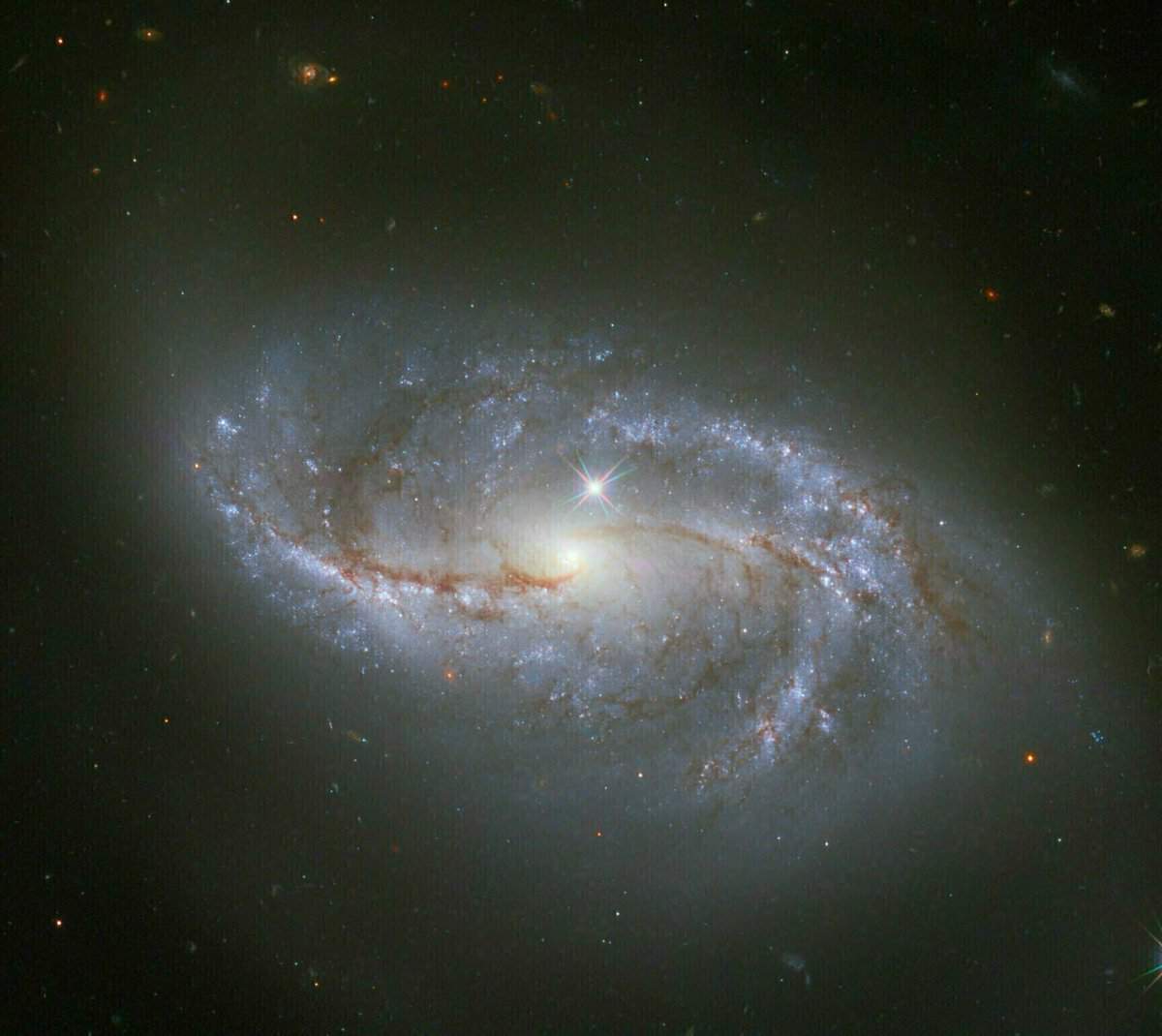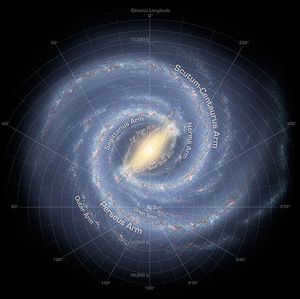
The term “Galaxy” (also known as “Milky Way”) originates from the Greek word Γαλαξίας which is derived from the word γάλα – referring to milk. As per Greek mythology, Zeus decided to create his son from a mortal woman. The composition of the Galaxy [ ]
The Galaxy is approximately 30,000 parsecs in diameter (around 100,000 light-years) and has an average thickness of roughly 1,000 light-years. It is estimated to house about 200 billion stars (although some modern estimates suggest a range of 200 to 400 billion). The majority of these stars are arranged in a flat disk shape. As of January 2009, the Galaxy’s mass is believed to be around 3 × 10 12 solar masses[3], equivalent to 6 × 10 42 kg. However, the majority of the Galaxy’s mass is not made up of stars and interstellar gas, but rather the non-luminous dark matter halo.
The central part [ ]
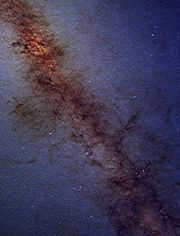
Within the central region of the galaxy lies a dense area known as the bulge, or the balgeum. This bulge spans approximately 8 thousand parsecs. At the heart of the galaxy, there exists a supermassive black hole known as Sagittarius A*. This black hole is believed to be orbited by a black hole of intermediate mass. Together, their combined gravitational influence on nearby stars causes these stars to follow unique trajectories.
The center of the galactic core is located in the Sagittarius constellation (α = 265°, δ = -29°). The distance to the center of the galaxy is approximately 8.5 kiloparsecs, which is equivalent to 2.62 x 10^22 cm, or roughly 27,700 light-years.

Galactic Halo
The Galactic halo has a spherical shape and measures approximately 5-10 thousand light-years in diameter [ 9 ] with a temperature of around 5 × 10 5 K [ 9 ] .
Many celestial objects are organized into different systems that rotate. For example, the Moon orbits the Earth, and the planets’ satellites orbit the Sun. This raises the question of whether the Sun is also part of an even larger system.
The 18th century saw the first comprehensive investigation into this matter conducted by the renowned English astronomer William Herschel. Herschel diligently observed and tallied the number of stars in various regions of the celestial sphere. His findings led to the discovery of a substantial celestial circle, which would later be referred to as the “Kant Circle,” after the philosopher Immanuel Kant, who proposed that certain nebulae might be galaxies resembling our own Milky Way. By the early 1920s, the question of the existence of extragalactic entities had become a topic of intense debate among astronomers. The famous astronomer Vesto Melvin Slipher provided evidence supporting the singularity of our Galaxy, while simultaneously challenging Kant’s hypothesis. However, it wasn’t until Edwin Hubble’s groundbreaking work that Kant’s hypothesis was ultimately validated. Hubble successfully measured the distances to several spiral nebulae and demonstrated that, based on their distances, these celestial objects could not possibly be part of our own Galaxy.
Please verify the accuracy of the information presented in this section. Any additional explanations or clarifications can be found on the discussion page.
The exact origins of galaxies are still not fully understood. Initially, the Milky Way contained a much greater amount of interstellar matter, primarily hydrogen and helium, compared to its current state. This matter has been continuously used up in the formation of stars. It is expected that this process will continue, resulting in a gradual decline in natural star formation over billions of years. Currently, most stars are formed in the arms of the Galaxy.
There is also the possibility of the Milky Way colliding with other galaxies, including the Andromeda galaxy which is of similar size. However, due to our limited knowledge, specific predictions about these collisions cannot be made. For more information, refer to the Panoramas [ ].

- ↑ 1,01,1Christian, Eric; Safi-Harb Samar.What is the size of our galaxy? Verified on January 22, 2010.
- ↑How many stars are there in the Milky Way?
- ↑ 3,03,1 Lenta.ru: “Milky Way weighs twice as much”, 06.01.2009.
- ↑ Anna Frebel Discovery of HE 1523-0901, a Star with Enhanced r-Process Elements and Detected Uranium // The Astrophysical Journal. — 2007. — Vol. 660. — p. L117. Wallace P.R. arΧiv:astro-ph/0703414
- ↑ 5,05,1 Nicolai Bissantz Gas dynamics in the Milky Way: second pattern speed and large-scale morphology // Monthly Notices of the Royal Astronomical Society. — 2003. — Vol. 340. — p. 949. Wallace P.R. arΧiv:astro-ph/0212516
- ↑ Kogut, A.; Lineweaver, C.; Smoot, G. F.; Bennett, C. L.; Banday, A.; Boggess, N. W.; Cheng, E. S.; de Amici, G.; Fixsen, D. J.; Hinshaw, G.; Jackson, P. D.; Janssen, M.; Keegstra, P.; Loewenstein, K.; Lubin, P.; Mather, J. C.; Tenorio, L.; Weiss, R.; Wilkinson, D. T.; Wright, E. L. Dipole Anisotropy in the COBE Differential Microwave Radiometers First-Year Sky Maps // Astrophysical Journal. — 1993. — Vol. 419. — p. 1. Wallace P.R.
- ↑ Scientists have discovered a second black hole in the center of the Milky Way.
- ↑arxiv:0812.3491 The Milky Way spiral arm pattern.
- ↑ 9,09,1↑vremya.ru, “The demise of galactic empires”, August 8, 2007.
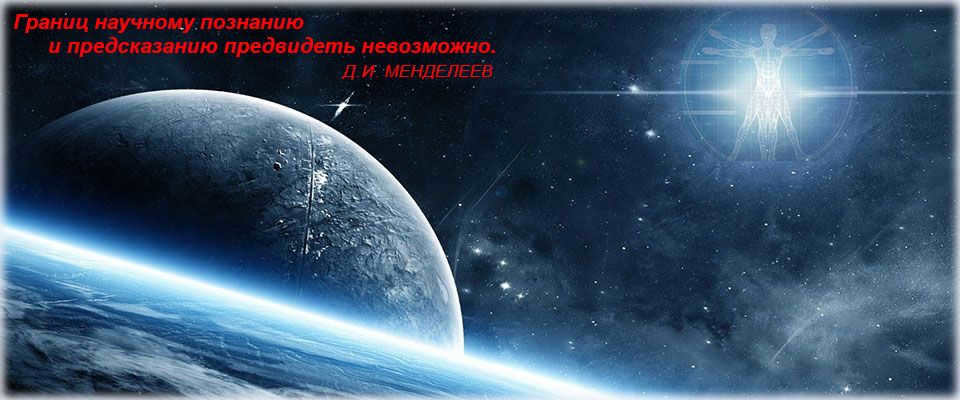

- Home
- Galaxies
Our Galaxy – The Milky Way
The Milky Way is an immense system held together by gravity, consisting of at least 200 billion stars, numerous massive gas and dust clouds, clusters, and nebulae. It is classified as a spiral galaxy and has a compressed structure resembling a “flying saucer” when viewed from the side.
The Milky Way, along with the Andromeda Galaxy (M31), the Triangle Galaxy (M33), and over 40 dwarf satellite galaxies belonging to both the Milky Way and Andromeda, form the Local Group of galaxies, which is part of the larger Local Supergroup (Virgo Supergroup).
Our Milky Way galaxy is structured in the following way: it has a central nucleus made up of billions of stars, with a black hole located at its center. Surrounding the nucleus is a disk composed of stars, gas, and dust, which spans a diameter of 100,000 light-years and has a thickness of 1,000 light-years. Within the middle section of this disk, there is a 3,000-light-year thick bulge.
In addition to the disk, the Milky Way also has arms and a spherical halo, known as the corona. The corona contains various celestial bodies, including dwarf galaxies, globular star clusters, individual stars, groups of stars, as well as dust and gas.
The central regions of our galaxy are densely populated with stars. In fact, each cubic parsec near the center contains thousands of stars, and the distances between stars are much smaller compared to the vicinity of our Sun.
The Milky Way galaxy rotates, although not uniformly throughout its entire disk. As we move closer to the center, the angular velocity of star rotation around the galactic center increases.
Within the Galaxy, there is an increased concentration of stars as well as dust and gas. A gas ring, consisting of a mixture of gas and dust, can be found between the center of the Galaxy and its spiral arms. This gas ring emits strong radio and infrared signals and has a width of approximately 6,000 light-years. It is positioned between 10,000 and 16,000 light-years away from the center. The gas ring is home to billions of solar masses of gas and dust and serves as a hub for active star formation.
Additionally, the Galaxy possesses a corona that houses globular clusters and dwarf galaxies, including the Large and Small Magellanic Clouds, among other clusters. The galactic corona also contains individual stars and groups of stars, some of which interact with the globular clusters and dwarf galaxies.
The plane of the Milky Way and the plane of our Solar System do not align, but are inclined to each other. The Sun’s planetary system orbits around the center of the Milky Way, completing one revolution in approximately 180-220 million Earth years, which is equivalent to one galactic year.
In the vicinity of the Sun, there are identifiable regions of two spiral arms, located approximately 3 thousand light years away from us. These regions have been named the Sagittarius arm and the Perseus arm based on the constellations in which they are observed. The Sun is positioned relatively in the middle between these two spiral arms. However, there is another arm, called the Orion arm, that passes through the constellation of Orion, which is relatively close to us in galactic terms. The Orion arm is considered a branch of one of the main spiral arms of the Milky Way Galaxy.
The Galactic Arms
The velocity of the Sun’s revolution around the Galactic center closely matches the velocity of the compressive wave that shapes the spiral arm. This situation is unique to the Galaxy as a whole: the spiral arms rotate at a constant angular velocity, akin to the spokes of a wheel, while the stars move in a different pattern, causing nearly the entire stellar population of the disk to pass through the spiral arms and then exit them. The only area where the velocities of stars and spiral arms align is known as the corotational circle, and it is within this circle that the Sun is positioned.
For our planet, this factor holds immense significance as the spiral arms of the galaxy host tumultuous events that generate intense radiation capable of annihilating all forms of life. No atmosphere could provide adequate shielding against this formidable force. However, Earth occupies a relatively tranquil position within the vast expanse of the Milky Way and has thus been spared from these catastrophic cosmic phenomena for hundreds of millions, if not billions, of years. It is conceivable that this favorable positioning has fostered the genesis and endurance of life on our planet.
An investigation into the rotation of the Milky Way has revealed the existence of significant quantities of non-radiating matter, known as “dark matter” or “dark halo”. Taking this hidden matter into account, the estimated mass of the Milky Way is approximately 10 trillion times that of the Sun. It is believed that a portion of this hidden mass may consist of brown dwarfs, gas giant planets situated between stars and planets, as well as dense, frigid molecular clouds that cannot be observed through conventional means due to their low temperatures. Moreover, there are numerous planet-sized objects within our galaxy and others that do not belong to any circumstellar systems and thus remain invisible to telescopes. Some of the hidden mass within galaxies may also be comprised of “extinguished” stars. Another hypothesis suggests that even the vacuum of galactic space contributes to the overall amount of dark matter. It is important to note that hidden mass is not unique to our Milky Way, but rather can be found in all galaxies.

Observing the sky at any given point in time, an individual has the opportunity to witness a subtle strip of illumination. Typically positioned in the middle or near the horizon, this phenomenon is none other than the Milky Way Galaxy. Its significance lies in the fact that it encompasses our solar system, housing planet Earth. Scientists are particularly intrigued by the Milky Way as they diligently study its characteristics and properties, which in turn contribute to the overall understanding of the vastness of outer space.

In today’s fast-paced world, simply relying on what you learn in school is no longer sufficient. It is crucial to acquire valuable knowledge about finance and investments to secure your financial stability.
Take control of your future by expanding your understanding and skills in financial literacy today. Access FINANCIAL LITERACY online.

Join us today, GIVE IT YOUR ALL.
What exactly is the Galaxy
A galaxy is a system consisting of stars, planets, gas, dust, and dark matter that are gravitationally connected. All objects within a galaxy orbit around a central nucleus and are held together by the force of gravity. The creation of the Hubble telescope provided scientists with the ability to observe distant galaxies. It is estimated that there are at least 100 billion galaxies in the visible portion of the Universe, distributed in a chaotic manner. Some regions contain clusters of galaxy groups, while others are devoid of galaxies. The mass of a single galaxy can range from 0.5*10^6 to 2.5*10^15 solar masses, with our own Milky Way galaxy having a mass of 2*10^11 solar masses. Galactic diameters vary from 16 to 800 thousand light years, while the Milky Way has a diameter of 100 thousand light years.
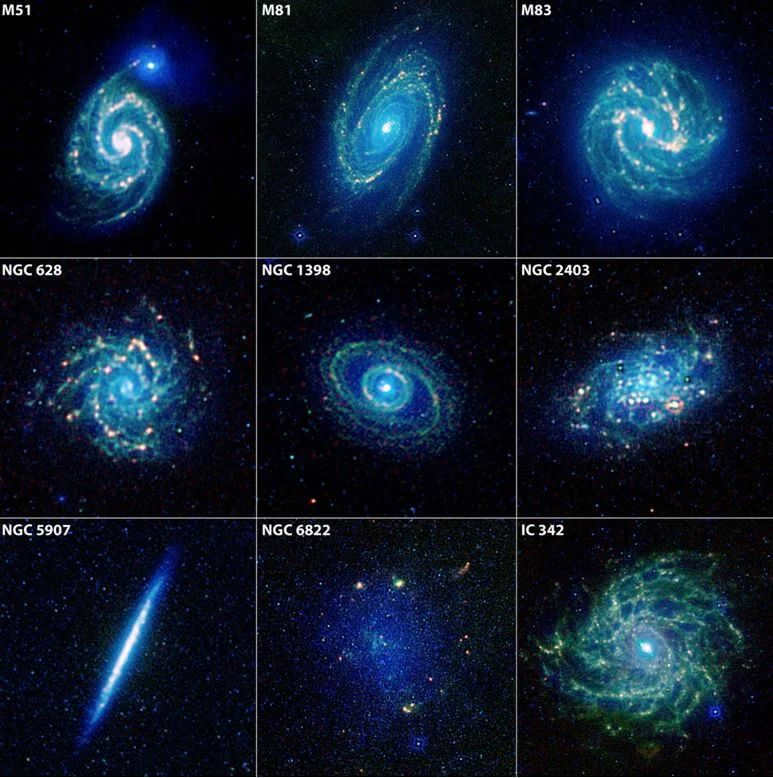
Source of Galaxies in the Universe
When characterizing galaxies, it is important to recognize that each one consists of three primary components:
- Stars, planets, black holes, and asteroids, which make up about 1% of the total mass;
- Interstellar dust and gases, which account for 20-30% of the mass;
- Dark matter, which comprises the remaining mass.
Approximately 95% of all known galaxies are grouped together. They can range in size from small clusters with a few tens of objects to large superclusters with tens of thousands of objects.
- The nucleus is situated at the center of the galactic space and contains large black holes.
- The disk, which is the thinner part, is believed to accumulate the highest concentration of stars, gas, and dust.
- The bright part of the galaxy is known as the bulge, which can also be translated as “bloat”.
- The outer component of the galaxy’s spherical shape is called the halo, and it does not have a clearly defined boundary with the bulge.
- A spiral arm is an element of a galaxy that consists of young stars and interstellar gas.
- A bar is a type of elongated shape within a galaxy, similar to a jumper, and it contains both stars and interstellar gas.
- The galaxy’s corona is a thin, hot gas that surrounds the galactic space and extends far beyond it.
- A globular star cluster is a collection of stars that orbit the central part of a galaxy and act as a sort of satellite.
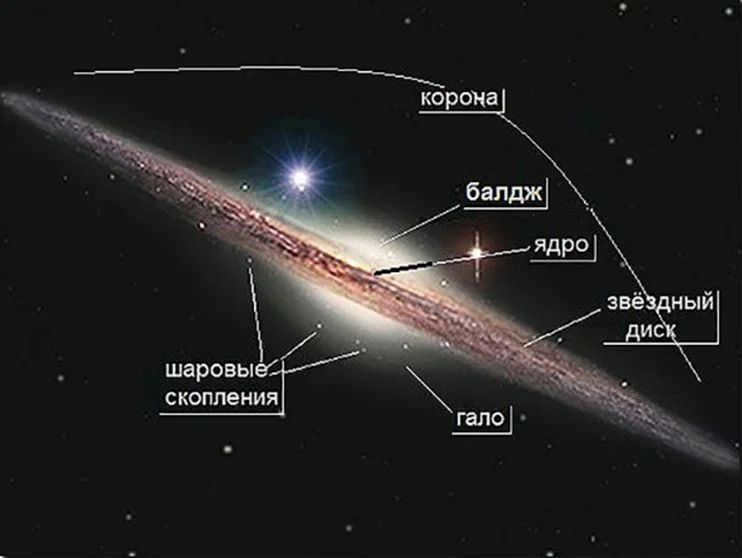
Source
There are four categories of galaxies existing in the vastness of the universe:
- Elliptical galaxies – as the name implies, these galaxies have an elliptical or spherical shape. They do not possess spiral arms and are mainly composed of red and yellow stars. Occasionally, white dwarfs can be found. Due to the absence of interstellar dust, the formation of new stars does not occur within these galaxies.
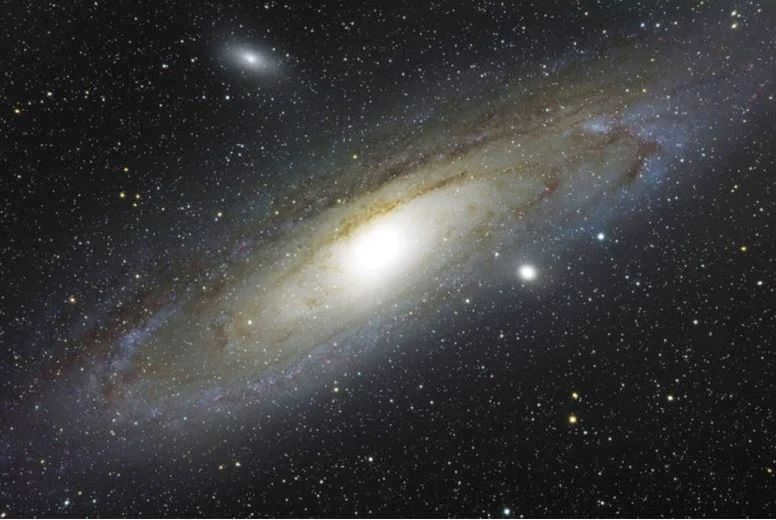
- A spiral galaxy can potentially possess multiple spiral arms. The galactic bulge is comprised of ancient stars, while the galaxy’s center may harbor numerous black holes. The galactic disk contains abundant amounts of dust and gas, fostering a highly active process of star formation.
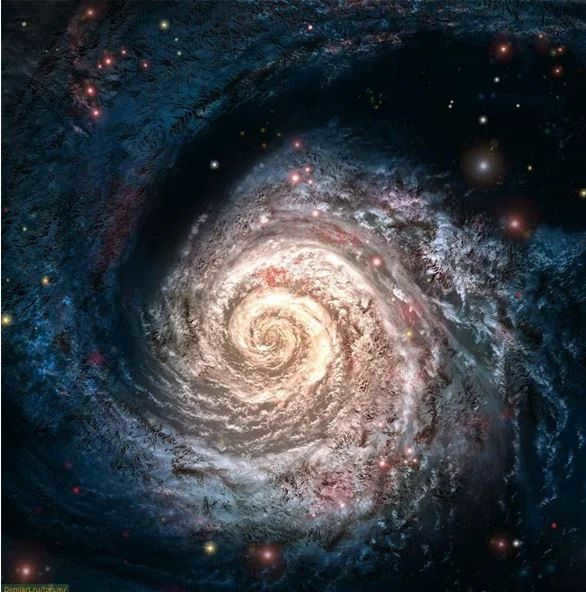
- Lenticular galaxies are a type of galaxy that falls between elliptical and spiral galaxies in terms of their characteristics. While they share similarities with spiral galaxies in appearance, lenticular galaxies lack the distinctive spiral arms. Additionally, lenticular galaxies have a minimal amount of interstellar dust, resulting in a slow process of new star formation. These galaxies make up only 5% of the total galaxies in the Universe.
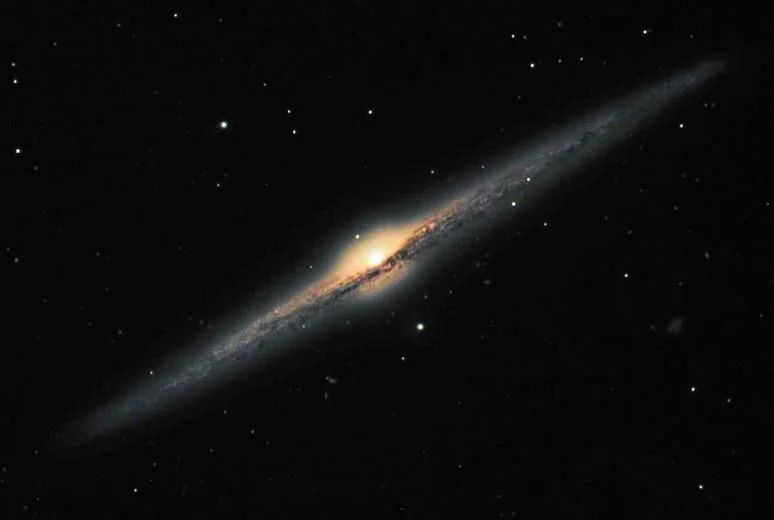
- Irregular galaxies lack a distinct structure. They come into existence through collisions with other galaxies or get dispersed due to the gravitational forces exerted by neighboring galaxies.
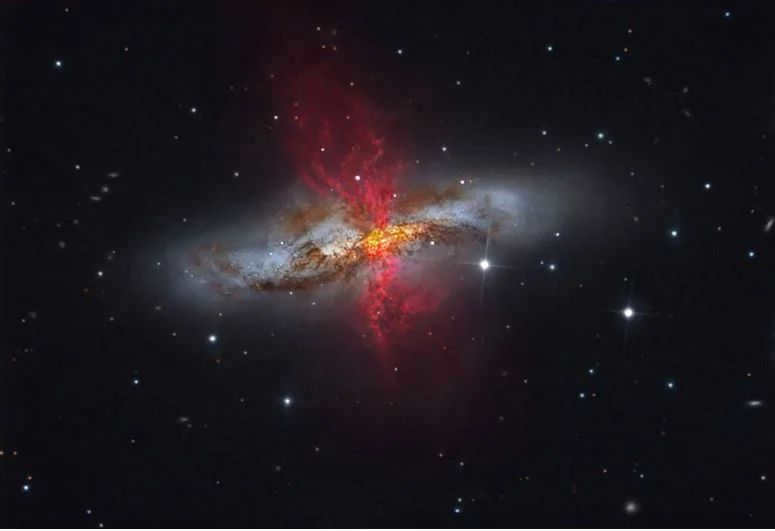

Features of the Milky Way Galaxy
Our galaxy, the Milky Way, is classified as a spiral galaxy with a bar. Legend has it that it acquired this name from an ancient Greek myth. According to the story, the titan Kronos would devour the infants born to his wife Rhea. This caused immense sorrow for the mother. After the death of her fifth child, Rhea decided to save her last son, Zeus. Instead of giving Kronos a baby, she presented him with a stone wrapped in a blanket. When the titan felt the weight of the stone, he requested to feed the child, as it felt too light. Rhea then splashed milk on the stone, but it simply bounced off and dispersed in the sky, creating the milky way. As Zeus grew up, he eventually overthrew Kronos and became the supreme ruler among all the gods.
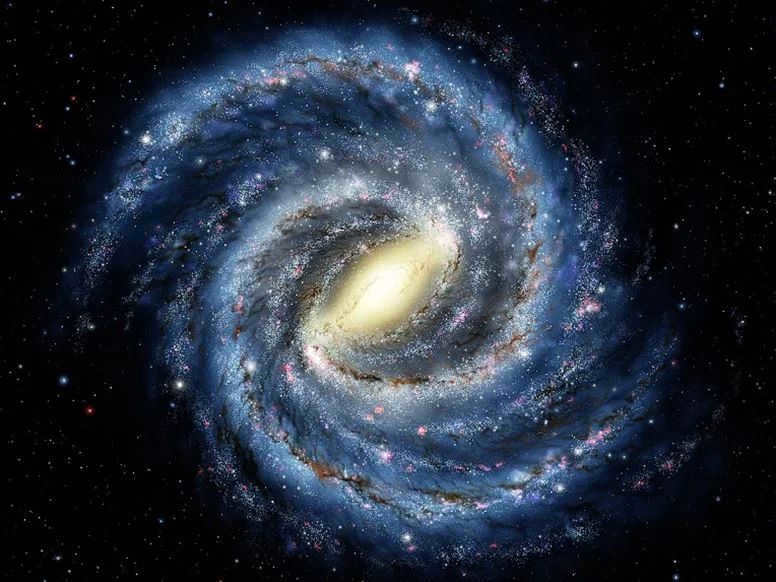
Source
Currently, the Milky Way has the ability to consume other galaxies. There are numerous star clusters scattered throughout the galaxy, which eventually come under its influence and are pulled into its arms by gravitational forces. Scientists have observed that the Milky Way is currently absorbing a small galaxy located in the Sagittarius constellation.
However, this characteristic of the Milky Way will soon disappear. There is already evidence of interaction between the Milky Way and the Andromeda Galaxy, which is 1.5 times larger. According to experts, these two galactic spaces will collide in the future, and Andromeda will engulf the Milky Way.
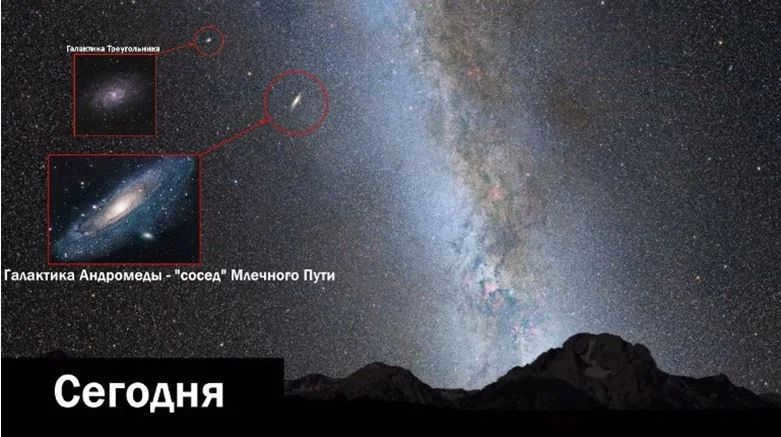
Original Source
Key Features of the Milky Way Galaxy:
- Diameter of approximately 100,000 light years;
- Comprised of 200 to 400 billion stars;
- The Sun is situated 27,000 light years away from the central region of the Milky Way Galaxy;
- The Solar System rotates around the center at a speed of 230 km/s. It takes 235 million years to complete one full revolution around the center;
- Collectively, all the objects within the Milky Way weigh 1.5 trillion solar masses.
When familiarizing oneself with the fundamental features of the Galaxy, it is important to acknowledge that due to its vast size, certain calculations may contain errors.
Size and composition
The core of the Milky Way is the central region that is filled with billions of stars. Determining the exact size of the galactic core is a challenging task, but scientists estimate that it spans several thousand parsecs (1 parsec is equal to 30.86 trillion kilometers). Within this core lies a black hole, which is believed to be the center of the galaxy. Additionally, the Milky Way is traversed by a bridge-like structure known as the jumper, which spans a distance of approximately 27 light-years. This jumper is inclined at an angle of 44° relative to our Sun. The Galaxy is primarily composed of stars, dust, gas, and constellations. Younger celestial formations are typically located farther away from the central region.
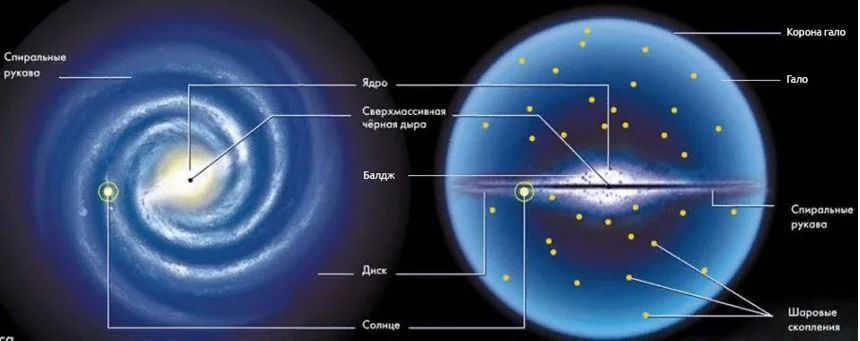
Source
The Milky Way’s halo is a region that encompasses star clusters and dwarf galaxies. These celestial formations are bound together by the gravitational forces of the galactic space and orbit around the Milky Way. The structure of our Galaxy consists of five primary arms, which are known as the Swan, Centaurus, Sagittarius, Orion, and Perseus arms.
Discovering the size of our Galaxy is bound to be equally fascinating. According to calculations and research conducted, it is estimated that the diameter of our Galaxy is 100,000 light years, with a width of 1,000 light years. Several years ago, the brilliant minds at the Canary Institute proposed that the size of the Milky Way Galaxy might actually be 200,000 light years. However, in 2020, astrophysicists unveiled the results of their latest study, suggesting that the diameter could potentially stretch to a staggering 1,900,000 light years. It is important to note, however, that these calculations have yet to be confirmed and currently remain nothing more than a theory.
Spiral arms
Spiral arms are regions in a galaxy where there is a high concentration of dust, gas, young stars, and star clusters. They are a distinctive characteristic of spiral galaxies, which are often referred to as spiral arms due to their twisted, spiral-like structure.
The Milky Way Galaxy, for example, has five spiral arms named after the constellations in which they are situated – Swan, Orion, Centauri, Sagittarius, and Perseus. The Orion arm is particularly significant as it is home to planet Earth and our entire solar system. While the Orion arm has been extensively studied, much remains to be discovered.
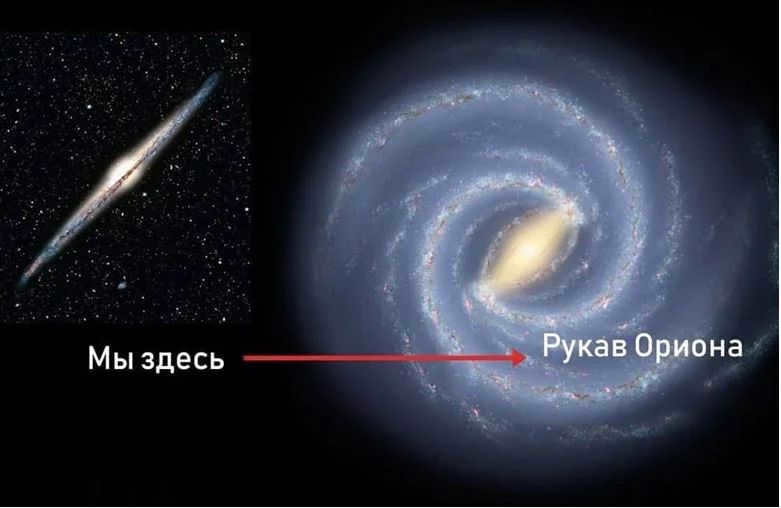
Source
The Orion spiral arm is positioned approximately between the constellations of Sagittarius and Perseus and spans a length of 11,000 light-years with a thickness of 3,500 light-years, making it the smallest arm in the Milky Way Galaxy.
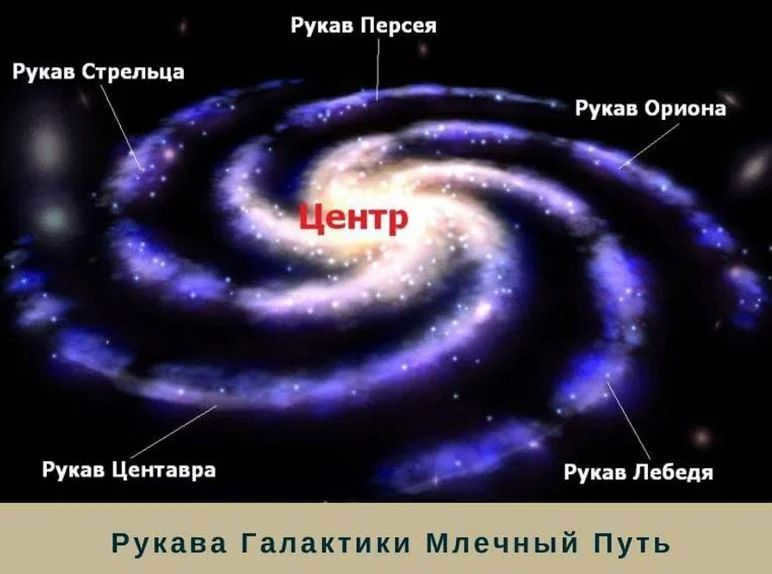
Source
What is the central region of the Milky Way Galaxy?
The central region of the Milky Way Galaxy is a luminous sphere of light. If humans were able to observe it in the sky without any aids, they would see an enormous elliptical shape that is at least 100 times larger than the Moon. Unfortunately, this incredible sight is obscured from our view by dense clouds of dust and gas.
Within the central region of the galaxy, there are billions of ancient stars. These stars have such a high mass that it is estimated to be 10 billion times the mass of our Sun. The stars within the central region of the galaxy orbit in elongated paths.
Located thousands of parsecs away from the center of the galaxy, there exists a gas ring that spans a width of 1.5 thousand parsecs. With a mass equivalent to 100 million solar masses, this gas ring is thought to be the primary area in the Galaxy where star formation occurs actively. Extending from it are spiral arms. However, at the very core of the galactic nucleus resides a black hole known as Sagittarius A.
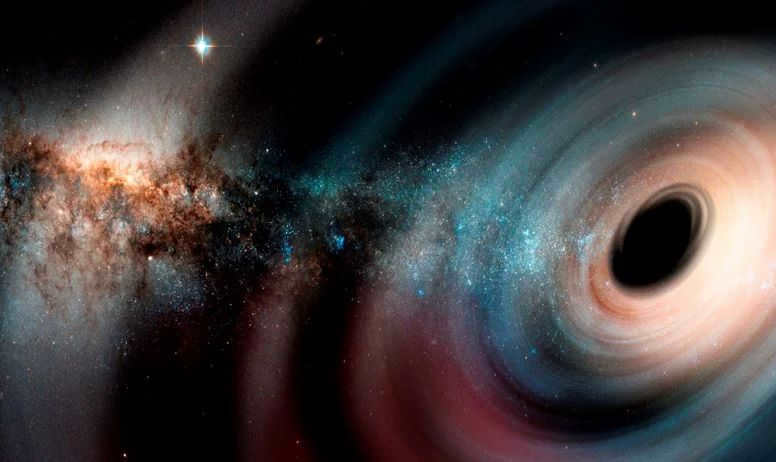
Regions of Stellar Formation
The Orion arm contains all the stars that are visible to the naked eye in the sky, totaling around 9,000 stars. The galactic core is home to one of the largest concentrations of stars, which is why it appears so bright. Moving away from the center, one can find younger celestial objects that belong to various constellations and arms.
Additionally, there are stars located in the halo, although their quantity is significantly smaller compared to the core. While billions of stars can be found in the arms, the halo consists of millions. Most of these halo stars have already completed their lifecycle and are considered ancient.
Rotation of the Milky Way Galaxy
All cosmic objects in the vast Universe exhibit motion, and the Milky Way Galaxy is no different. It undergoes rotation around its own center, following a clockwise path. Moving at a speed of 230 km/s, it takes approximately 235 million years for one complete revolution. As objects move farther away from the center, the angular velocity of their rotation decreases. This phenomenon was initially discovered by Edwin Hubble in the early 20th century.
Modern astronomy, cosmology, and physics frequently come across the term “dark matter”. However, there lacks a precise definition for this concept as it remains invisible to researchers. It stands as one of the most enigmatic phenomena in contemporary science. Observing dark matter remains an elusive task, and its existence is inferred through the gravitational impact it exerts on the orbits of stars in galaxies.
The detection of unseen matter in the galaxy was first reported in 1922. James Jeans, a physicist from Britain, and Jacobus Kapteyn, an astronomer from Holland, were the first to announce its existence. By observing the gravitational interactions between objects and parts of the universe, these researchers were able to calculate the mass of visible space. However, it soon became apparent that there was a discrepancy between the predicted and actual weight. This led to the discovery of invisible mass, which makes up 95.1% of the total mass of the universe. Within this invisible mass, 26.8% is attributed to dark matter and 68.3% to dark energy. A more comprehensive investigation into these two phenomena could provide valuable insights into the future of our Universe.
Discovering the composition of dark matter poses a significant challenge for scientists, as it exhibits a paradoxical nature of simultaneously existing and yet being absent. The name itself is merely a placeholder, as this substance lacks any discernible color. However, dark matter possesses distinct characteristics:
- It is subject to gravitational forces.
- It exerts influence on other celestial objects.
- It exhibits limited interaction with the tangible world.
- It does not emit electromagnetic radiation.
According to certain scientists, it is hypothesized that it has the capability to influence the trajectory of light propagation. When dense objects are present, they can reflect light emitted from objects located further away, resulting in a change in the path of the light. As a consequence, the image of galaxies and stars becomes distorted. This distortion leads to the appearance of cosmic mirages, a phenomenon known as gravitational lensing. Gravitational lensing has played a crucial role in the creation of a map that illustrates the distribution of invisible matter in three-dimensional space.
The existence of dark matter has been partially substantiated by the presence of Bullet galaxy clusters. Additionally, the existence of dark matter has been confirmed through the observation of collisions between other galaxy clusters.

There are numerous enigmas and puzzles that the universe conceals, and astronomers are continuously striving to unravel the enigma of the Milky Way and determine our planet’s position within it.
The birth of our galaxy can be traced back to the Big Bang, an event that, as per scientific theory, marked the beginning of the cosmos. The formation of our star system occurred approximately 100 million years subsequent to the creation of the universe.
What is the title of our galaxy?
The Milky Way system derived its name from its Greek origins. According to ancient Greek mythology, Zeus desired to grant immortality to Hercules and thus requested Hera to nurse him.

Rubens, The Origin of the Milky Way.
However, the goddess declined and, in order to prevent the milk from reaching the baby, scattered it across the celestial sphere. The term Galactica derives from the Greek word for “milk.” As astronomy gained popularity, the arrangement of the celestial bodies underwent constant transformation with each novel revelation.
Discovery and Naming: A Historical Perspective
Mankind has been captivated by the vastness of space since time immemorial. The initial strides in unraveling the mysteries of our galaxy were taken by none other than Plato himself. According to his observations, the celestial bodies seemed to be intricately connected, forming a mesmerizing tapestry across the heavens. Aristotle, on the other hand, postulated that the Milky Way was a conglomeration of luminous gases suspended in the Earth’s atmosphere. Nevertheless, these conjectures put forth by the ancient Greek philosophers were merely based on theoretical ponderings.

The discovery of the telescope enabled scientists to uncover the secrets of the Milky Way. Galileo was the first to accomplish this feat. Not only was he able to observe the star cluster, but he also provided an explanation for the enigmatic luminosity of this celestial phenomenon and even managed to sketch its presumed structure. According to astrophysicists, the galaxy is a diverse entity, comprising of stars and black nebulae, which are believed to be black holes.
Throughout history, it has been known that the Earth orbits the Sun. However, the question of whether the solar system resides within the Milky Way or if it is the other way around remained unanswered. William Herschel, an English musician with a passion for astronomy, finally found the solution. He meticulously counted the number of stars in various regions of the sky, ultimately discovering the truth.
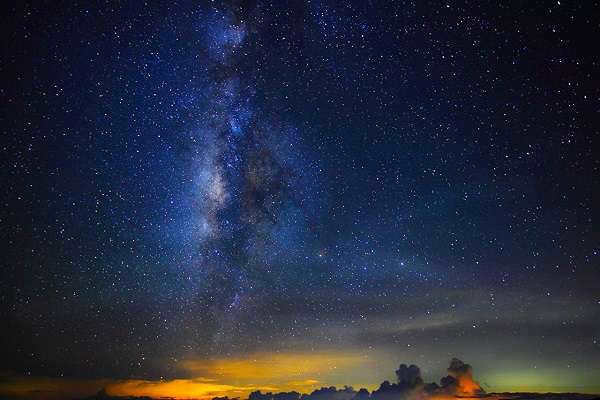
Through the calculation, it was determined that a celestial region exists where the largest collection of stars can be observed, known as the galactic equator. This celestial equator divides the sky into two distinct sections, with the number of stars increasing as one approaches the center of the equator. At the very heart of this celestial division lies the Milky Way. This significant discovery led Herschel to speculate that the stars visible to humans at night form a complex system, organized in the shape of a spiral.
Key Features of the Milky Way
The Milky Way is positioned within the Orion arm, with a distance of 8.5 parsecs to the galactic center. Spanning a diameter of 100-200 thousand light years, this galaxy is estimated to be around 13 billion years old.
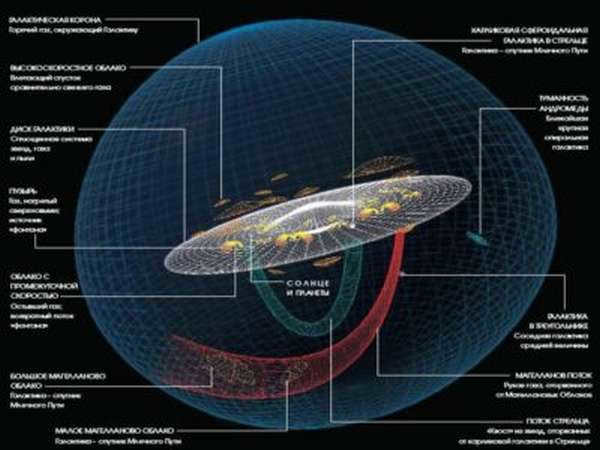
The structure of the Milky Way (click to zoom)
The precise mass is unknown to researchers, but it is believed to be approximately 3 trillion times the mass of the Sun. Similar to any system, our galaxy revolves around its central point. The Milky Way constantly changes its position, moving randomly throughout the cosmos.
According to scientists, it is estimated that there are between 200 and 400 billion stars in our galaxy. The brightest and closest ones can be observed with the naked eye from Earth.
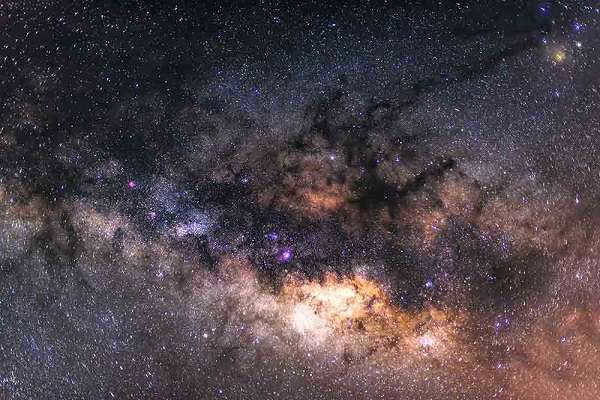
Most of the stars in our galaxy are concealed by a shroud of gas and dust, making them difficult to observe. However, recent advancements in infrared cameras have allowed astronomers to peer through these veils.
One of the largest stars in the Milky Way is known as UY Shield. This red giant is hundreds of times larger than the Sun, with its boundaries extending to the orbit of Jupiter if placed in the position of our own Sun.

By having an idea of the estimated quantity of stars within the Milky Way, one can envision the vast number of planets that it encompasses. According to scientific calculations, this figure could potentially reach hundreds of thousands.
Organization and layout of our galaxy, the Milky Way
Our star system is classified as a spiral galaxy and is composed of five primary arms:
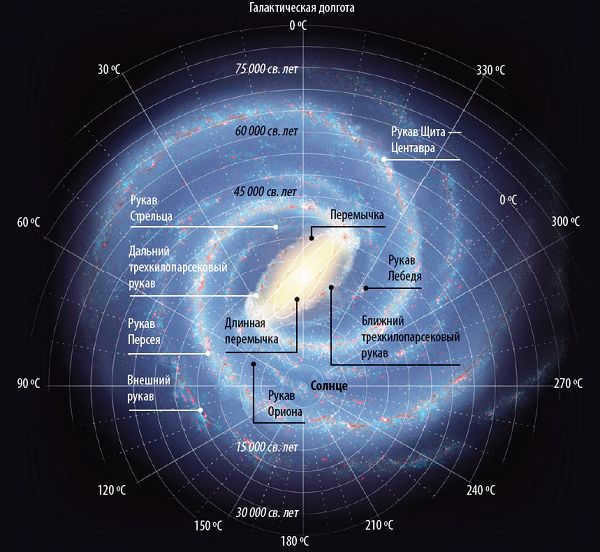
Similarly, the pathway is encompassed by radiant stars, creating a lintel. It stretches for a distance of 27,000 light-years, traversing the entirety of the galaxy, commencing from its core.
The central region of the Milky Way harbors a black hole, while the other celestial bodies within the system coalesce to form nebulae. The remaining expanse of the cosmos consists of dark matter, an aggregation of gaseous space clouds that fill the emptiness.
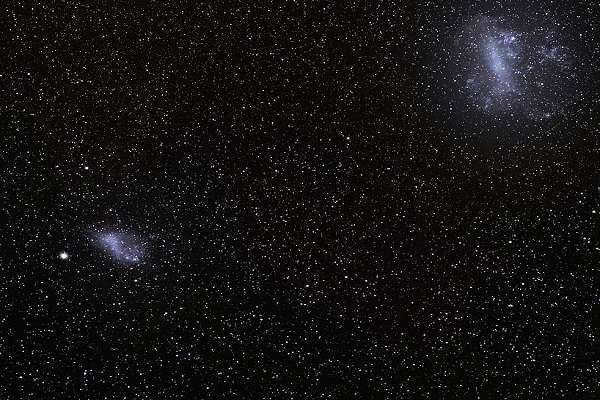
There are two smaller galaxies orbiting our own star system, known as the Small and Large Magellanic Clouds.
Scientists are continuously revising and updating the model of the Milky Way, making necessary adjustments and additions.
Closest galaxy to our own Milky Way
Within the vicinity of our stellar system, there exists a multitude of dwarf and giant galaxies. Among them, the nearest galaxy is none other than the Andromeda Nebula. This massive galaxy boasts an impressive population of approximately 1 trillion stars.
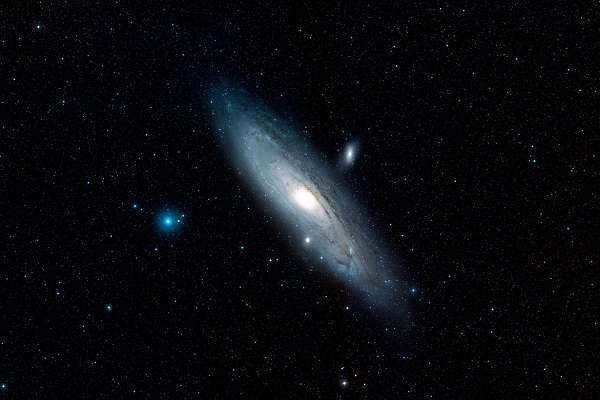
The galaxy was first mentioned by the Persian astronomer As-Sufi. More accurate observations were recorded in 1612 by the German astrophysicist Simon Meriem.
Within the astronomy community, the galaxy is commonly referred to as M 31. This name was given by Charles Messier when he compiled a catalog of celestial objects.
Scientists used to believe that the Milky Way’s center is where the Sun is located. However, after performing calculations and analyzing the pulsation of cepheids near the celestial luminary, astronomers have concluded that the Sun is situated on the periphery of the galaxy.
The distance between the core of the galaxy and the massive star ranges from 20,000 to 25,000 light years.
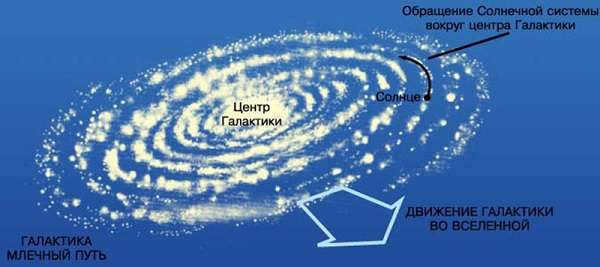

The velocity of the solar system within the Galaxy
The Sun’s velocity is approximately 18-20 km/h, and it takes 250 million years to complete one rotation. The Sun’s movement is inclined at an angle of 25 degrees in relation to the Galaxy’s plane. Every 33 million years, our star traverses the galactic equator.
The upcoming fate of our galaxy
In approximately 4 billion years, experts predict a monumental event in the cosmos – the collision between the Milky Way and Andromeda. This intergalactic encounter will result in the merging of these two stellar giants, giving birth to a super galaxy of unprecedented proportions.
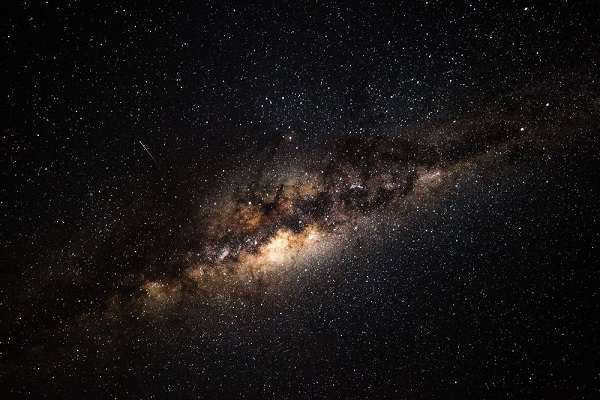
Astronomers have given a name to the system – Mlecomeda. The chances of a collision are currently low, as the galaxies may come close to each other and then move apart.
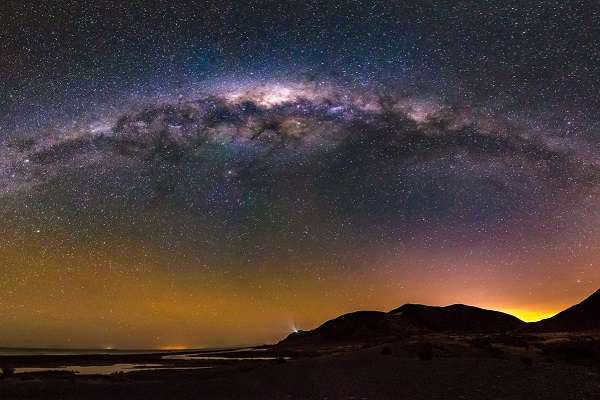
Here are some additional interesting facts:
- The galaxy has an unusual shape; when seen from space, it appears slightly curved. This distortion is caused by the gravitational pull of the Magellanic Clouds, which attract dark matter and create fluctuations in hydrogen gas.
- The Milky Way is comprised of smaller galaxies. Its structure was formed through the absorption of dwarf systems.
- Located at the center of the galaxy is an incredibly large black hole.
- Each year, new stars are continuously being formed within the system.

Stars are celestial bodies consisting of hot gases and can be several times larger than our planet Earth. Their color can vary depending on their temperature, ranging from blue to yellow or red. Due to their immense distance from us, stars appear as small, luminous dots in the night sky. These dots come together to form massive galaxies, consisting of millions of stars.
Little Galaxy
This category encompasses celestial systems that are not large enough to develop the distinctive spiral structure found in expansive star systems such as Andromeda or the Milky Way. Little galaxies typically consist of only around ten million stars, and in comparison to a spiral galaxy like the Milky Way, they are considerably more compact in size and internal arrangement of celestial objects.
The Milky Way and a cluster of galaxies
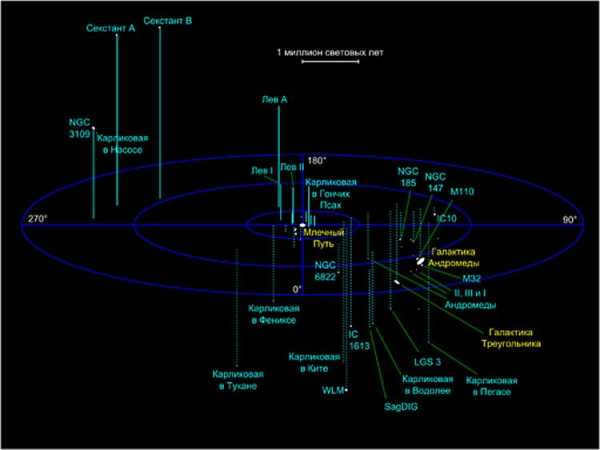
A nearby group of galaxies
Our star system is commonly known as the Galaxy, or sometimes called the “Milky Way Galaxy”. It is classified as a spiral galaxy, although some astronomers have proposed that it might be traversed by another spiral galaxy.
A model of the Milky Way in three dimensions
Just like stars come together to form clusters, galaxies come together to form groups, and powerful groups of clusters are known as superclusters. Our Milky Way is a member of a group called the Local Group. This group consists of approximately thirty-six galaxies of different sizes and types, and our Milky Way is considered one of the largest. Currently, it is nearly impossible to accurately determine the exact number of stars in our galaxy, but astronomers estimate that there are between 200 to 400 billion stars, depending on the method of counting.
Is it possible to quantify it?
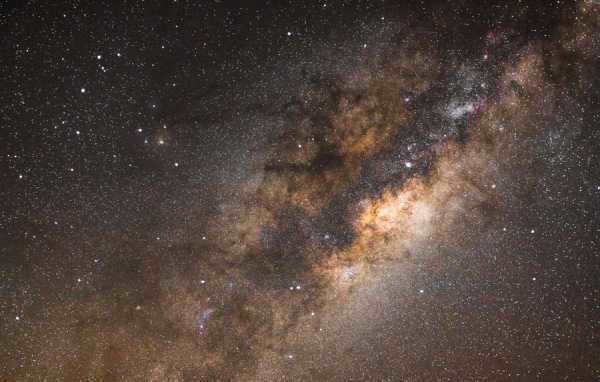
Towards the Sagittarius constellation
In ancient times, astronomers diligently observed the night sky, attempting to quantify the seemingly stationary dots that we now know as stars. Centuries have passed, yet the curiosity to count these celestial bodies remains unabated. Within the Milky Way alone, there are over two hundred billion stars, each undergoing the cycle of birth, death, and rebirth. Some stars have life spans that span millions, even billions, of years. The sheer magnitude of this concept is unfathomable, making it virtually impossible to individually study each and every star.
A single page within the confines of a literary work…
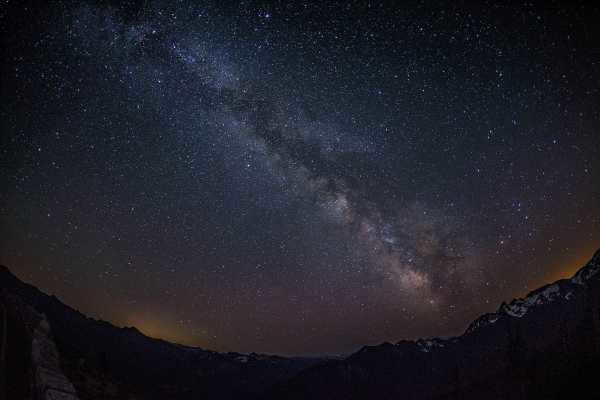
So, the question remains: how long will it take to determine the exact number of stars in our galaxy? At this point, the answer remains elusive. However, what we can confidently affirm is that if it were possible to conduct a thorough examination of each and every star and compile all the information into books, describing each of the 200 to 400 billion stars and dedicating just one page to each would likely exceed the capacity of even the largest library in the world.
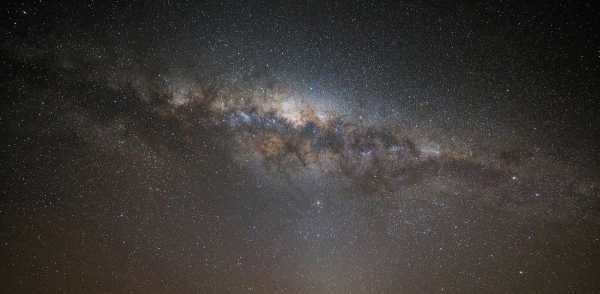
The Milky Way is comprised of stars that represent only a tiny portion of the fifty billion galaxies that exist within the universe. As we continue to explore and analyze the vast expanse of outer space, it becomes increasingly evident that there are numerous enigmas waiting to be unraveled by humanity.

